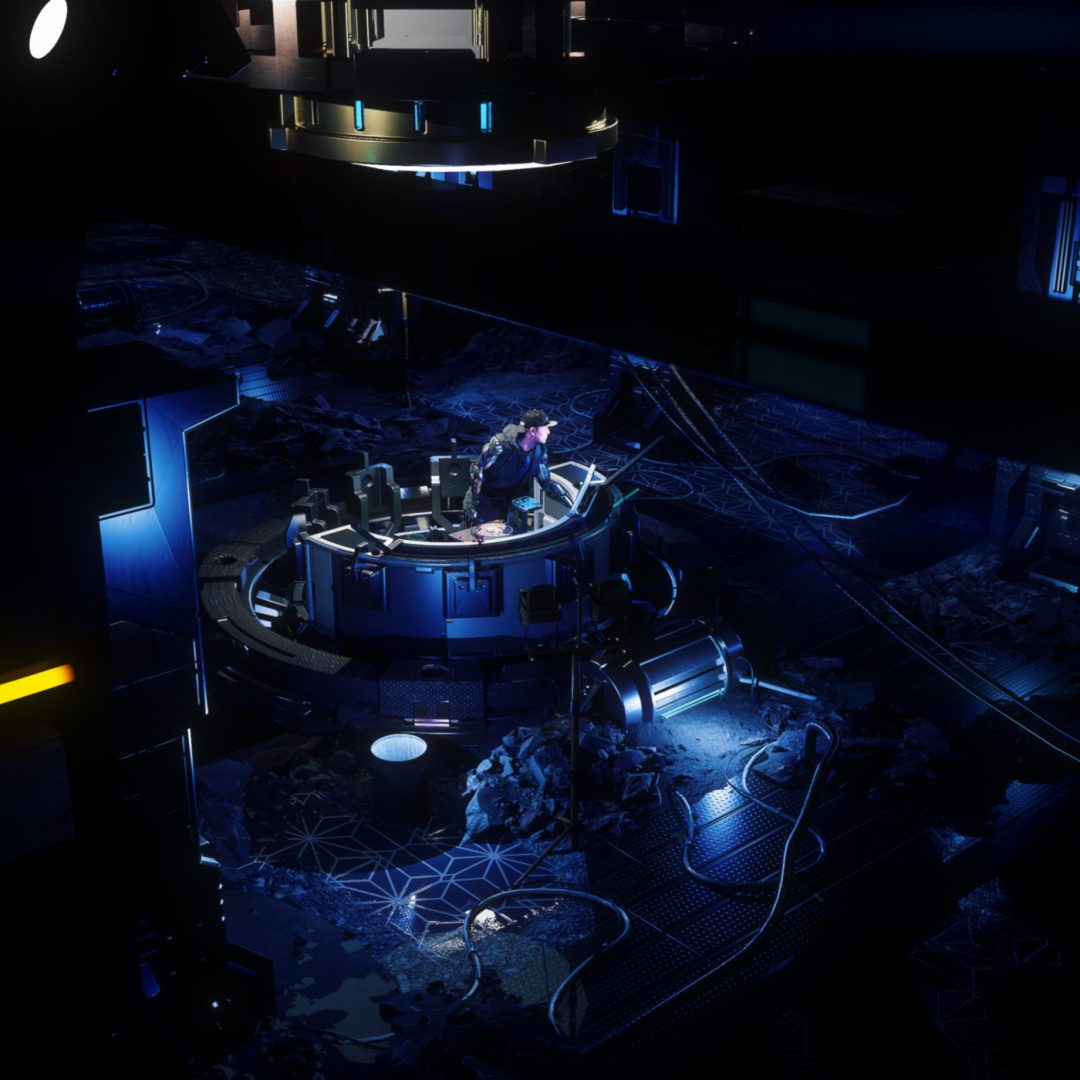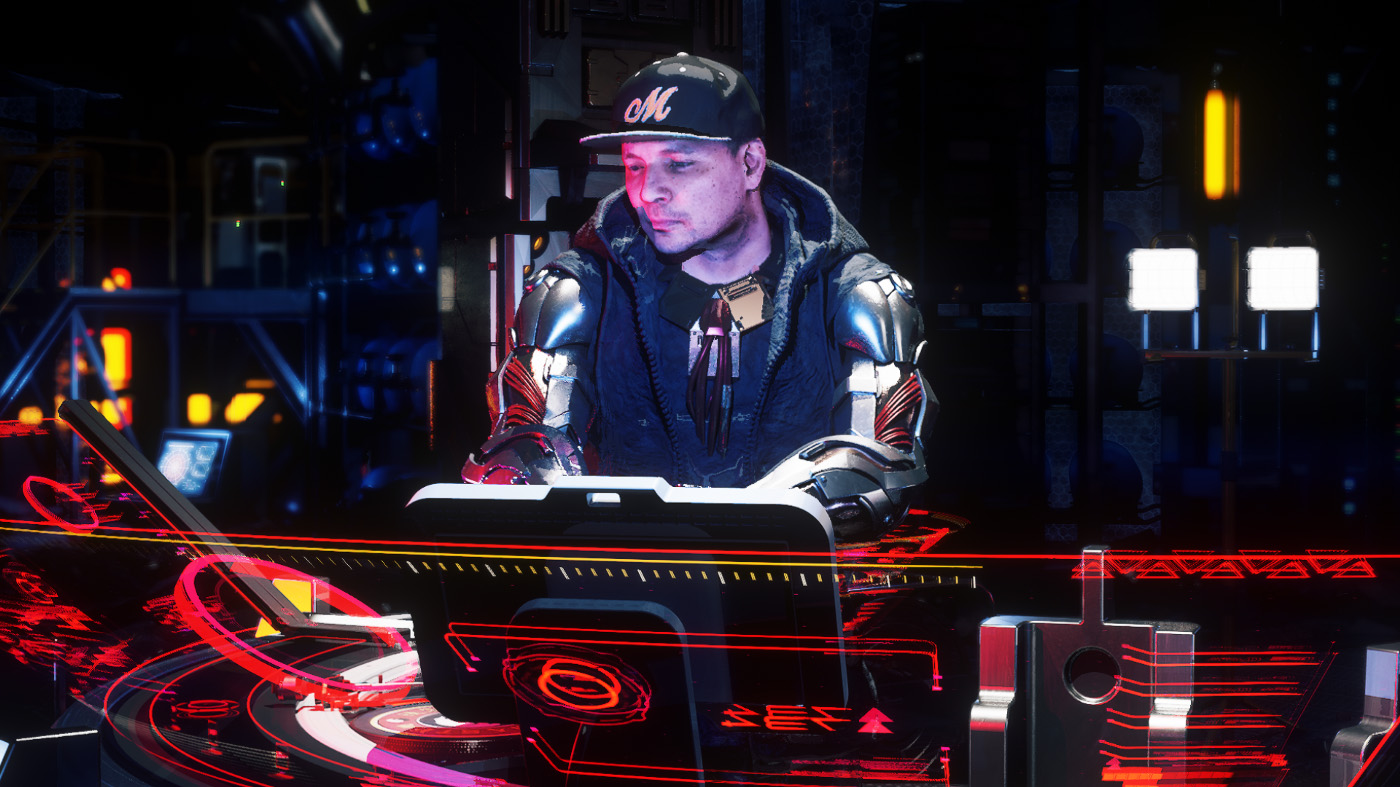Let’s Talk NFT Art with Jonathan Winbush
Award winning motion graphics artist Jonathan Winbush shares his views about the NFT Art market, the best way to sell your Crypto Art, and why it’s still worth entering the market, even with the wild swings of crypto currency.
Nancy: Thanks for joining us Jonathan! You’re familiar to many people for your high-profile work with Mix Master Mike in VR, as well as 3D animation and traditional 2D formats. And now you have become a prominent crypto artist! How did you get involved in making NFT’s?
Jonathan: Thank you for saying that. I appreciate it! I noticed NFT’s around the end of last year, when I saw a few friends get into it early on posting on Twitter about selling their art, and they sold it for so much ETH (Ethereum). It took me a while to come around to it being legit and not some sort of scheme, but once I finally decided to jump into it I’ve been 100% invested in creating NFTs.


N: How do you adapt your content creation for the format and platform of NFT’s?
J: Coming from a motion graphics background nothing format-wise was foreign to me. I’m used to delivering animations in a variety of resolutions and formats, so it was an easy transition. I do see that some platforms tend to favor widescreen 16×9, while on others vertical screens view better.
N: How do you actually upload and sell them?
J: So there are various platforms out there right now. Some are curated and you have to apply or be invited, and some are open to everyone. If you just want to start selling right away, the most popular platforms for that are Rarible and Opensea, but since it is an open platform your work can easily get buried in the thousands of NFTs being uploaded every day. This is where curated platforms like SuperRare, MakersPlace, and Known Origin come into play, because you have to apply to these platforms to show your work, and you can only start to sell if you’ve been accepted. There’s a 3rd option now from a newer platform called Foundation. Here you must be invited by an active artist on the platform. So to start, the artist gets 2 invites. They can onboard 2 other artists onto the site, and then those artists can invite 2 more artists if they make a sale. This is supposed to make the artist be the ones in charge of curating the site as opposed to a select group of admins.
N: What separates an exclusive NFT platform from a more mass-market platform? How can people tell them apart? Buyers and content creators?
J: As stated above, for the exclusive platforms you have to be accepted to sell. And the mass market ones are like the wild west. Once you get active in the NFT space you learn pretty quickly the plus and minuses of each platform. Club House and Twitter Spaces are a great way to chat with active artist if you want the DL on what’s what when it comes to speaking with artists that already have experiences on the various platforms.
N: What would you recommend for content creators who want to step in and create NFT’s? Is it already too late? How can they start.
J: I personally don’t think it’s too late. I feel like it’s only the start. We did have a bull run where a lot of artists made a lot of money fast, because of it hitting the mainstream media. But things have leveled out a bit again, so I would say now is the perfect time to get in and take your time to learn the space. I learned a lot by talking with artists first on Club House in NFT rooms and more recently in Twitter spaces.
N: Where is the best place to view crypto art?
J: So there is a platform that launched not too long ago call Showtime, which is almost like a social media platform for NFT artist and collectors. Here everyone can see all the crypto art you’ve bought or created on most NFT platforms and can even like / follow as if you’re on Instagram or Twitter. An example of what my profile looks like is here https://tryshowtime.com/Winbush


N: You are collaborating with Mix Master Mike for a Crypto Art version of his latest album. What is the process for that? How did that come about?
J: We created an NFT together for his single ” Mob Recipe” which sold on SuperRare. ( https://superrare.com/artwork-v2/mix-master-mike—mob-recipe-23814 ). The first one turned out so well that we even created a Remix version, where Mike redid the audio and I redid the visual, but keeping it true to the original concept ( https://superrare.com/artwork-v2/mix-master-mike—mob-recipe-remix-23816 )
This piece was completely motion-captured and using Unreal Engine I was able to build an environment and make it all come to life in real-time. I’m extremely proud of how this project turned out, and for collectors MJData and Beeple to own it.
N: New support products and platforms seem to be announced on a regular basis. You are involved in an exciting new platform called OmArt, which is an infinite rolling auction. Can you explain what that is, and how you were involved?
J: So OmArt is a new NFT platform rolling out from Mainland China. An infinite rolling auction means that an NFT will be automatically auctioned by the platform. So if you make a bid on my piece, then another collector can come in and outbid you until the auction is over. I’m one of the artists that was part of the platform launch and live auction at the Shanghai Plaza. People can experience the NFT art in a museum exhibit setting and place bids while they are there. The physical show will last a month being the largest NFT physical show to date. The platform went live July 26th at http://omart.io/
N: One of the most famous crypto artists right now is Beeple. You’re part of the same content creator community. Have many people jumped on board? What is the general vibe among creators about the future of this platform?
J: I think for us motion graphics artists, Beeple is the one that really set it off as a real thing where we can really sell our art. As I was saying before, a few artists in our community were already selling some art, but there was always that thought of, is this really legit? Once Beeple made his first drop and got, I think, around 300K, it collectively opened our eyes and his next drop was 3 million and that’s when you saw everyone, all at once, run for the gold rush. During this time I would always think to myself, is this how the 1848 California gold rush happened. Someone found gold then a storm of people come rushing in to get some of that gold as well. I got into NFTs right before that big rush, so I always had a plan to make this a part of what I do for the long haul, but I can honestly say I’ve seen a huge dip in artists that came for the rush then dropped off pretty fast. The artist that has stuck around is continuing to create great work and keep finding new ways to innovate with their own art.
N: What place do you think this has in the metaverse?
J: There’s a lot of hype around Decentral land and Sandbox. I have no inside information, but I’m kind of waiting to see what Epic Games has in store. I feel like they have all the pieces already in place to create a huge Metaverse and seeing stuff like the Travis Scott and Ariana Grande concerts they did in Fortnite, I can only imagine what they do with their own NFT focused Metaverse world.
N: Do you think the Metaverse will be separate platforms owned by competing companies? Or something more connected like the internet?
J: Right now it seems like there’s a lot of companies creating their own Metaverses. Decentral land seems to be the big one everyone is always talking about but personally, I’m waiting to see what companies like Epic Games, Amazon, or Microsoft do. I have no inside information but based on Epic games tools and resources I could see them creating a Metaverse in the style of Fortnite that would be very appealing to their already large userbase.
N: The market has seen some volatility with the fluctuation of Bitcoin and other cryptocurrencies. Do you think this affects the Crypto Art market?
J: Yea the cryptocurrency state of fluctuation across all coins is really scary. I mean, we saw Bitcoin go from 62k to 30K in a matter of moments and the same with ETH. It went from 4.1K to a low of 1.7K like overnight, but I think this is where innovation kicks in and people are working on solutions to work on coins that aren’t so whooshy washy. Also, some platforms do accept Fiat currency as well so you can still just use your local currency if you don’t want to dive into ETH.
N: What is the difference in your personal art, your commercial work, and your crypto art?
J: The main difference for me is commercial work you are being paid to create someone else’s vision. Yes, they come to you for your creative style and input, but at the end of the day you are bound to the scope of the project. I don’t see any difference between personal art and crypto art. In fact, during the big NFT rush a lot of artists were posting their past personal works for sale on the blockchain. So if you were an artist that created personal work often ,then you had a good catalog of work you could showcase and sell
N: How did you decide what would make good Crypto Art?
J: This is one of those questions no one will ever have the answer to. I’ve seen stuff such as a black pixel on a white screen sell for thousands while amazing CG artists work just sits. Most of the time it really comes down to how the artist can market themselves and get exposure. You can have fantastic work, but if no one can see it then how can they purchase it right? Marketing doesn’t have to mean your the loudest or post your art everywhere all day. If you come up with a good strategy on how you can gain interest in your work that can go a long way.
N: Are you concerned about copyright when you create NFT’s? How do you take that into consideration? Do you see anyone copying your work?
J: Me personally no. I’ve treated NFTs just as I have client work in you don’t want to use other companies IPs in your work. DC comics sent out a letter earlier this year to all their employees and freelancers warning artists not to use their characters in their NFT work without permission, so this shows me that these companies are paying attention. I can’t say I’ve seen anyone copying my work, but I’ve seen where people have used my tutorials and made the end product into NFT’s. Very early on this was a big issue. People would follow tutorials online then just make them into NFTs. I don’t see this happening as much these days as the community has grown and more people are creating Crypto Art.
N: Thanks so much Jonathan!
Jonathan’s work can be seen on his twitter, Insta and youtube channels. He also shares articles on projects and workflow on his medium channel: https://winbush.medium.com
About the author:
Nancy Eperjesy is co-founder of Mettle, and has over two decades experience in post-production and software development. She is passionate about product development, and creating new tools for content creators.



